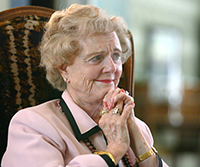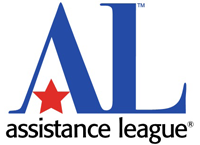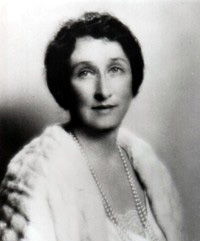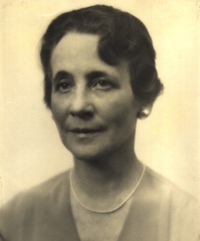OUR CHAPTER HISTORY
Assistance League® of San Luis Obispo County was incorporated in 1991 and chartered as the 95th Chapter of National Assistance League in 1996. Operation School Bell® was adopted in 1995 as its philanthropic program. Operation School Bell provides a most basic need – clothing. Since 1995 more than 36,000 students from low-income families have been provided with school-appropriate clothing throughout San Luis Obispo County.
We are an all-volunteer organization with over 110 member volunteers and no paid staff. We have been able to successfully administer, staff and fund our program for 28 years. In 1995, our first year of Operation School Bell, we clothed 100 children. Each successive year, through budgeting and working with purpose and determination, we have clothed more and more students through our primary philanthropic program, Operation School Bell. In addition to new clothing, we have added sub-programs that provide the students with dental hygiene kits, new grade-appropriate books, and tote bags filled with grade-appropriate school supplies.
In April 2015, the Chapter opened its Thrift Store at 667 A Marsh Street in San Luis Obispo. It is staffed entirely by our member volunteers. The Thrift Store is a key source of funding to support our Chapter and its philanthropic programs. The additional revenue has allowed us to continue to serve more students in need in our County and to increase the amount spent on each student.
HISTORY OF OPERATION SCHOOL BELL
Ruth Ann Montgomery was the founder of Operation School Bell. In 1954 she was a school teacher in Southern California. She noticed that children from certain families had irregular attendance. She discovered that they had a limited number of clothes for school. The children attended school on the days when it was their turn to wear the clothes. Ruth Ann started scavenging clothes from family and friends. She began clothing these children out of her classroom closet. It was called the “Clothes Closet.” She knew that if children could not attend school they could not achieve academically and socially.
When she moved to Bakersfield in 1955 she revived the “Clothes Closet” and renamed it Operation School Bell. In the spring of 1957 Ruth Ann Montgomery, who had studied other nonprofit organizations to merge with, chose National Assistance League®. In 1958 National Assistance League adopted Operation School Bell as a philanthropic program. Today every chapter of Assistance League is required to have an Operation School Bell program tailored to its community’s needs.
At the time of Ruth Ann’s death in 2011, 3,278,330 children had been clothed through Operation School Bell. Today that number is more than 5,700,000. This all started with one woman who cared about someone else’s child.
 Ruth Ann Montgomery
Ruth Ann Montgomery
ASSISTANCE LEAGUE HISTORY
Assistance League was the first nonprofit, nonpolitical, nonsectarian organization founded in the West to recognize the potential of volunteers in helping those less fortunate to a better, more meaningful life. Today, chapters across America address the emotional and physical needs of children and adults of all ages regardless of race or creed.
Organized as a national nonprofit in 1935, Assistance League’s roots date back to the turn of the twentieth century America when founder, Anne Banning, pioneered a tradition of compassion and benevolence carried on by her modern-day counterparts in Assistance League chapters around the country.
Anne Banning and her close friend and co-founder, Ada Edwards Laughlin, married into influential well-to-do families. Anne’s father-in-law, Phineas, is the “Father of the Port of Los Angeles.” Her husband, Hancock, was instrumental in the development of Catalina Island. Ada, a Stanford graduate, teacher, the proponent of women’s basketball, married Homer Laughlin Jr., whose family is known for creating the iconic Fiesta Dinnerware that is still popular today.
A social activist at heart, Anne and a small group of prominent ladies began doing local charitable work in the mid-1880’s under the name Assistance League. Their humanitarian efforts extended beyond local boundaries to the victims of the San Francisco earthquake. To raise money for those people underserved by conventional charities, Anne used her social connections to establish the “pay to attend” fundraising model that has proven successful for nonprofit organizations. During World War I, Anne organized the Los Angeles Red Cross Chapter and served as its Director.
In 1919, Anne, Ada and their charity-minded friends formalized Assistance League of Southern California, as a precursor to the national organization. They began by providing food and clothing for local families severely impacted by the war. A few years later, they greatly expanded their efforts with a neighborhood Community House that offered programs and services, which were emulated by public and private agencies.
Inspired by a life of privilege to help people adversely affected by their circumstances, Anne and Ada created a legacy of giving back which endures today. When they retired in 1948 there were 10 chapters throughout Southern California. Today there are currently 120 nationwide.


